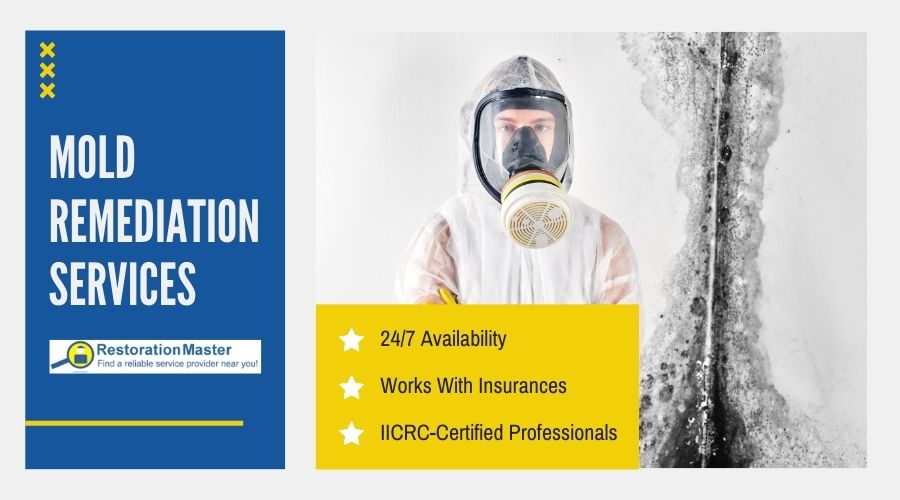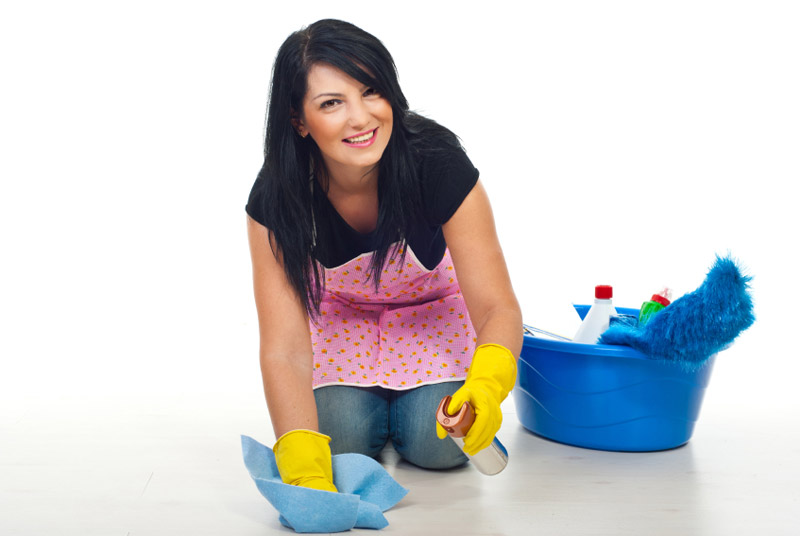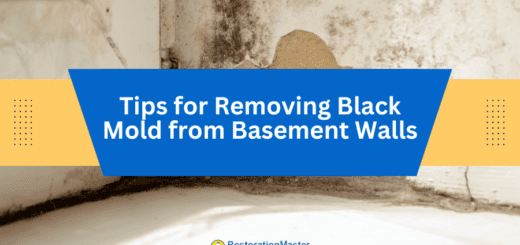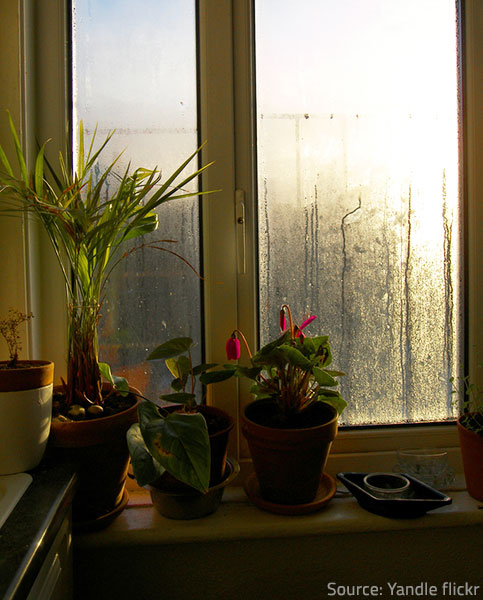How to Remove Mold and Mildew from Clothes
Finding moldMold is a type of fungus that grows in damp or humid conditi... More on your clothes can be a disheartening discovery. The appearance of moldMold is a type of fungus that grows in damp or humid conditi... More growth can make your clothing unsightly, cause musty odors, and damage the materials. MoldMold is a type of fungus that grows in damp or humid conditi... More often appears on clothing due to exposure to moisture or storage in a damp area that is not well ventilated, like a dresser drawer or closet. It is also possible for moldMold is a type of fungus that grows in damp or humid conditi... More and mildewMildew is a type of fungus that grows on damp surfaces, typi... More in your washing machine to affect your clothing.
In some situations, it is possible to remove moldMold is a type of fungus that grows in damp or humid conditi... More from your clothing yourself and restore it to its original condition. In this guide, we will discuss the steps you can take to effectively remove moldMold is a type of fungus that grows in damp or humid conditi... More from your clothing as well as what you can do to prevent your clothing from becoming affected by moldMold is a type of fungus that grows in damp or humid conditi... More. It is important to act fast once you notice moldMold is a type of fungus that grows in damp or humid conditi... More on your clothing to prevent the moldMold is a type of fungus that grows in damp or humid conditi... More and the damage it causes from spreading.
How Do Clothes Get Mold?
Clothing is particularly susceptible to moldMold is a type of fungus that grows in damp or humid conditi... More growth because the fabric provides moldMold is a type of fungus that grows in damp or humid conditi... More with necessary nutrients to survive. The main trigger of moldMold is a type of fungus that grows in damp or humid conditi... More growth on clothing is moisture as moldMold is a type of fungus that grows in damp or humid conditi... More sporesSpores are microscopic reproductive units of fungi or mold t... More cling to damp and wet clothing and feed on organic nutrients within the fabric. This typically happens when clothing is stored in poorly ventilated areas or when it is put away after being washed, but before it could thoroughly dry. There is also an increased risk of moldMold is a type of fungus that grows in damp or humid conditi... More and mildewMildew is a type of fungus that grows on damp surfaces, typi... More on clothing if it is not washed for an extended period of time.
The odorAn odor is a smell, often detectable by the human nose, whic... More is usually the first sign of moldMold is a type of fungus that grows in damp or humid conditi... More on clothing. If you notice this smell coming from a closet or dresser drawer, make sure to thoroughly check your clothing for visible signs of moldMold is a type of fungus that grows in damp or humid conditi... More growth. The moldMold is a type of fungus that grows in damp or humid conditi... More may be fuzzy or slimy in texture and gray, white, black, or green in color.
What to Do If You Find Mold on Your Clothes
The first thing you need to do when you find moldMold is a type of fungus that grows in damp or humid conditi... More on your clothing is assess the situation and consider the following before determining how to proceed:
- How extensive is the damage? Is there a single small spot of moldMold is a type of fungus that grows in damp or humid conditi... More, or is the entire garment affected?
- Are other pieces of clothing also affected by moldMold is a type of fungus that grows in damp or humid conditi... More? It is unlikely that a single piece of clothing will have moldMold is a type of fungus that grows in damp or humid conditi... More growth while others around it are untouched.
- How important is the damaged clothing? Your great-grandmother’s antique wedding dress is probably worth restoring while the sweater you bought on clearance last year might not be.
If the damage is minor, and the affected garments do not hold sentimental or monetary value, you may be able to remove the moldMold is a type of fungus that grows in damp or humid conditi... More from the clothes yourself. However, if the garments are too important to lose, or the moldMold is a type of fungus that grows in damp or humid conditi... More damage is extensive, call a reputable mold remediation professional who also specializes in content cleaning or soft goods cleaning.
How to Remove Mold from Your Clothes
If you decide to remove the moldMold is a type of fungus that grows in damp or humid conditi... More from your clothing yourself, it is important to do the job safely. Make sure you protect yourself from moldMold is a type of fungus that grows in damp or humid conditi... More exposure by using eye protection, disposable gloves, and a mask, preferably an N-95 mask so you do not inhale the moldMold is a type of fungus that grows in damp or humid conditi... More sporesSpores are microscopic reproductive units of fungi or mold t... More. Once you have gathered the necessary personal protective equipment (PPE)Personal protection equipment (PPE) is safety gear such as g... More, you can follow these steps to effectively remove moldMold is a type of fungus that grows in damp or humid conditi... More from your clothing.

Read the Care Label
Before beginning any cleaning, read the care labels on your affected clothing. The label should include information on the most effective way to wash the item of clothing, including water temperature and dryingDrying is the process of removing moisture from materials, s... More instructions. Following the instructions on the label will prevent further damage to the fabric.
Brush the Mold Stain
The first thing you should do is brush the dry moldMold is a type of fungus that grows in damp or humid conditi... More stain to remove some of the visible moldMold is a type of fungus that grows in damp or humid conditi... More. Use a toothbrush or another type of stiff bristled brush and be sure to brush both sides of the fabric. It is best to do this outdoors so the moldMold is a type of fungus that grows in damp or humid conditi... More sporesSpores are microscopic reproductive units of fungi or mold t... More you brush away do not spread within your home.
Spot Treat Stains or Pre-Soak the Clothing
After brushing away as much moldMold is a type of fungus that grows in damp or humid conditi... More as possible, you can then treat the affected clothing by spot treating the stains or soaking the clothing before washing it in the washing machine. To spot treat the stains, apply a few drops of heavy-duty liquid laundry detergent to the stains. You can also use undiluted white vinegar to spray the stains. Let the garment sit for about 15 minutes before putting it in the washing machine.
You can choose to pre-soak the fabric before washing it to help loosen the stains. To do this, let the garment sit submerged in a commercial pre-soak product, or in a bucket with a solutionA solution is a homogeneous mixture of two or more substance... More that is equal parts water and white vinegar. If you use a commercial pre-soak, let the clothing saturate for one hour before removing it. If you are using the vinegar solutionA solution is a homogeneous mixture of two or more substance... More, let the clothes sit for 30 minutes before washing them. Do not mix vinegar with bleach.
Wash the Clothes in the Washing Machine
After spot treating and pre-soaking the clothing, you can wash them in your washing machine at the hottest water temperature recommended by the care label. Hot water is effective for killing moldMold is a type of fungus that grows in damp or humid conditi... More sporesSpores are microscopic reproductive units of fungi or mold t... More as well as removing bacteria and allergens. Add heavy-duty detergent to the wash cycle, as well as a mold-killing disinfectantA disinfectant is a chemical substance used to kill or inact... More. The best disinfectantA disinfectant is a chemical substance used to kill or inact... More to use depends on the type of clothing:
- White cotton fabric: For clothing that is 100 percent white cotton fabric, you can add 1 quart of distilled white vinegar or chlorine bleach to the wash cycle. Make sure to follow the directions on the label when using chlorine bleach.
- Light-colored synthetic fabric: For light-colored clothing made from synthetic materials, you can add diluted chlorine bleach, distilled white vinegar, or borax to the wash cycle. Remember to never mix chlorine bleach with vinegar or borax as mixing these products creates toxic fumes.
- Dark-colored natural or synthetic fabric: For dark colored clothing, add pine oil or a phenolic disinfectantA disinfectant is a chemical substance used to kill or inact... More like Lysol to the wash cycle. These products help avoid color fading.
Hang Dry Clothing Outdoors
When the wash cycle is complete, hang your clothing outside so it can dry in the sun. Sunlight can kill moldMold is a type of fungus that grows in damp or humid conditi... More sporesSpores are microscopic reproductive units of fungi or mold t... More and the airflow from the breeze will help ensure that the clothing is thoroughly dried.
Do not put the clothing in your dryer as the heat from the dryer can make the stains more visible and difficult to remove.
Address Lingering Mold Stains
If the moldMold is a type of fungus that grows in damp or humid conditi... More stains are still visible after completing this process, you can repeat the process until the stains are completely removed. For persistent stains that are still visible after repeating the above-mentioned process, you can treat them with oxygen-based bleach by following these steps:
- Follow the directions on the package to mix the oxygen-based bleach with warm water. Make sure the clothing is completely submerged in the solutionA solution is a homogeneous mixture of two or more substance... More and let it soak for at least 8 hours.
- Check the stains and if they have been removed, you can wash the clothing in a normal wash cycle.
- If the stains persist, repeat this soaking process until the stains are gone. It may take several soakings to completely remove the stains.
Removing Mold from Non-Washable Clothing
It is possible to remove moldMold is a type of fungus that grows in damp or humid conditi... More stains from clothing that is not machine washable. The best method for removing moldMold is a type of fungus that grows in damp or humid conditi... More from non-washable clothing is to apply distilled white vinegar directly to the stain and scrub it with an old toothbrush. For stubborn stains, you can add baking soda and continue scrubbing until you remove the stain.
The mixture of white vinegar and baking soda is effective for killing moldMold is a type of fungus that grows in damp or humid conditi... More and removing stains without affecting the color of the fabric.
How to Prevent Your Clothing from Becoming Affected by Mold or Mildew
While removing moldMold is a type of fungus that grows in damp or humid conditi... More stains from your clothing is possible, it is best to prevent your clothing from becoming affected by moldMold is a type of fungus that grows in damp or humid conditi... More in the first place. Following these easy steps can help you protect your clothing from moldMold is a type of fungus that grows in damp or humid conditi... More:
- Dry clothes completely: Make sure your clothes have been completely dried before putting them in your closet or dresser.
- Store clothes in a well-ventilated area: Air circulation helps prevent moisture accumulation which prevents moldMold is a type of fungus that grows in damp or humid conditi... More. Make sure the areas where you store your clothing are well ventilated and allow for air circulation.
- Use moisture-absorbing products: You can place silica gel packets and other moisture-absorbing packets in the areas where you store your clothing to absorb excess moisture.
- Wash your clothes regularly: Damp and soiled clothing is much more prone to moldMold is a type of fungus that grows in damp or humid conditi... More growth than clean clothes. Wash your clothing regularly and make sure it is thoroughly dried before putting it away.
- Use a dehumidifierA dehumidifier is a device that removes excess moisture from... More: Consider placing a dehumidifierA dehumidifier is a device that removes excess moisture from... More in areas of your home with high humidityHumidity is the amount of moisture or water vapor present in... More levels such as basements and laundry rooms to help keep your clothes dry.
Related Read: Removing Mold From Places You Store Laundry
Call a Mold Remediation Professional
Finding moldMold is a type of fungus that grows in damp or humid conditi... More on your clothes can be frustrating, but it’s an issue that can be resolved with the right approach. MoldMold is a type of fungus that grows in damp or humid conditi... More thrives in damp environments, so acting quickly is essential to minimize damage and prevent its spread. By following proper cleaning techniques and using effective mold-removal products, you can restore your clothing and eliminate musty odors. However, preventionPrevention refers to actions taken to reduce the likelihood ... More is always better than remediation. Ensure your clothes are completely dry before storing them, maintain good ventilationVentilation is the process of exchanging or circulating air ... More in storage areas, and use moisture-absorbing materials like silica gel packets or dehumidifiers. With these proactive steps, you can protect your clothing and keep moldMold is a type of fungus that grows in damp or humid conditi... More at bay.

If the moldMold is a type of fungus that grows in damp or humid conditi... More stains on your clothing are severe, it is best to call a professional that can effectively treat and restore your clothing. Mold remediation experts use specialized processes to treat delicate materials affected by moldMold is a type of fungus that grows in damp or humid conditi... More, like clothing, to completely remove the moldMold is a type of fungus that grows in damp or humid conditi... More and restore them to their original condition. These professionals can also remove moldMold is a type of fungus that grows in damp or humid conditi... More growth from closets and laundry rooms to prevent the moldMold is a type of fungus that grows in damp or humid conditi... More from spreading to your clothing or other areas of your home.












